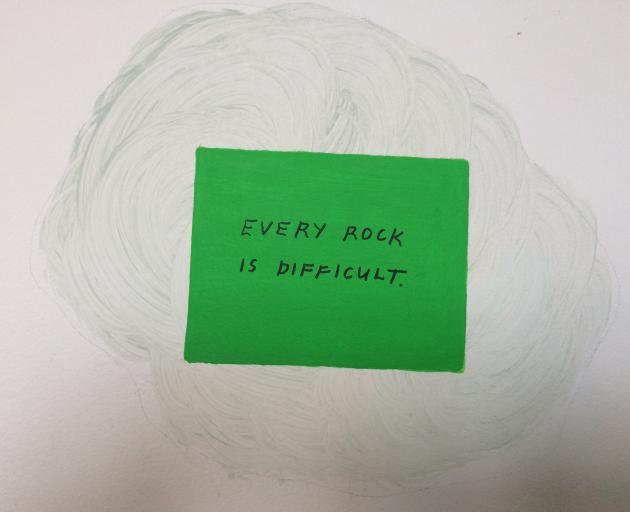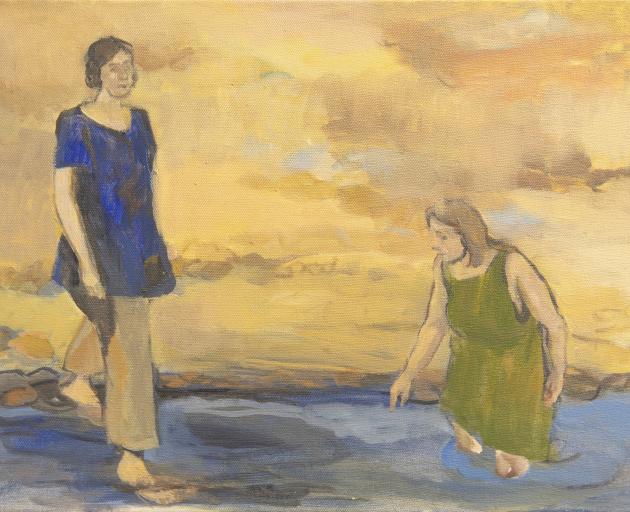In this week's Art Seen, Robyn Maree Pickens looks at exhibitions from Nick Austin, James Hope, and Sandra Bianciardi.
 Some Vermont Nature Notes 2018, Nick Austin
''Some Vermont Nature Notes'', Nick Austin xxx
Some Vermont Nature Notes 2018, Nick Austin
''Some Vermont Nature Notes'', Nick Austin xxx

Headed by Gilbert May and John Ward-Knox, xxx is a new exhibition space at 407 Princes St. The exhibitions in this first programme are framed by the theme ''counterfeit''.
Nick Austin's exhibition is the programme's fourth. In keeping with the theme, each artist responds to the work of an artist of their own choosing, and as such the relationship between the two is individually inflected. Austin has selected American artist, poet and theatre designer Joe Brainard (1942-1994), who is associated with the New York School.
In 1970, Brainard produced a written collection of observations titled Some Vermont Nature Notes in a special edition of one for Robert Butts that are in turn humorous, factual and koan-like. Austin has responded to this work in a way that distils the intimacy and caprice of Brainard's text-based work.
One of Brainard's observations is ''TREES CERTAINLY DO HAVE A WAY ABOUT THEMSELVES''; another is ''EVERY ROCK IS DIFFICULT''. Among the profuse greenery of indoor plants that variously fan, fall and spread all around the space (a permanent fixture), Austin has painted grey-white cloud-like shapes that form a backdrop for grass-green rectangles.
On these rectangles - which approximate the dimensions of envelopes - Austin has written Brainard's observations in black marker pen. For the most part, each cloud holds one penned observation, but there are two instances in which the observations are in dialogue. Open Sundays 11am-1pm only.
 Mephitis Series 1-6, 1995 (installation view)
''Strangers'', curated by James Hope (Dunedin Public Art Gallery)
Mephitis Series 1-6, 1995 (installation view)
''Strangers'', curated by James Hope (Dunedin Public Art Gallery)

Cibachrome, black-and-white photography, chrome tinted, selenium-toned silver gelatin print, ambrotype ... the vocabulary associated with this exhibition of photographs is almost as beguiling and evocative as the works themselves.
Although such terminology might suggest an earlier historical period, some of the photographs, such as those by Ben Cauchi, were made in the early 2000s. Artists such as Cauchi have retained, even revived historical processes and techniques to produce contemporary works.
As the exhibition's title, ''Strangers'', suggests, the photographic artists selected by curatorial intern James Hope trawl through the darker recesses of the human psyche. Everyday activities such as eating fruit (although it is the lesser known persimmon) in the backyard become troubled, uncanny, even fear-inducing.
Works such as this one by Christine Webster (Devouring a Persimmon in the Back Yard, 1983) in part achieve their effect through long exposure, which produces blurred features and movement. Looking further, I noted the blur in a photograph by Anne Noble (Moira, 1976).
Any relationship between the blurred image and the uncanny was swiftly unseated, however, by photographic works of precision, such as Peter Peryer's Self Portrait in Bath, 1977), in which the artist is facedown in a bath full of water. If there is a middle ground to be found between the blurry and the sharp, it is evident in a suite of black-and-white photographs by Ronnie van Hout.
 Defile 2018, by Sandra Bianciardi
"Defile'', Sandra Bianciardi (Eskdale Gallery)
Defile 2018, by Sandra Bianciardi
"Defile'', Sandra Bianciardi (Eskdale Gallery)

Sandra Bianciardi is a French artist who now lives and works in Dunedin. I mention this biographical information because Bianciardi has titled the exhibition and 16 figurative paintings in French.
One painting (Defile, 2018) is also the exhibition's title. It is an interesting word, as its capaciousness allows multiple meanings, which Biancardi usefully exploits in this exhibition. ''Defile'' as a noun means ''parade, march'' and as a verb encompasses ''to soil, desecrate, taint''.
The paintings present a range of figures engaged in various mundane and creative activities, such as singing, standing in the waves, playing the flute and gazing out a window. This variety of activities can be interpreted as a kind of human parade, a sampling of the things humans do.
The second sense of ''defile'' (desecration, taint) is also evident in the apparent ennui of the figures. The subjects' emotions are restrained and subdued in the way the figures hold themselves, and in their facial expressions. Bianciardi's muted palette, application of paint, and brushwork amplify the overall feeling of ambivalence in her subjects.
Although there are occasional stripes of vibrant colour, Bianciardi offsets the vibrancy with layers of murky brown, sometimes partially obscuring the figures. Likewise, Bianciardi resists applying the oil thickly, opting instead for thin layers applied with scuffed brushwork.
In other instances, Bianciardi allows the paint to drip, creating micro abstractions within figurative compositions.
-By Robyn Maree Pickens












